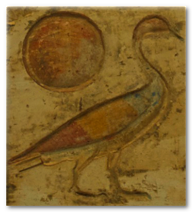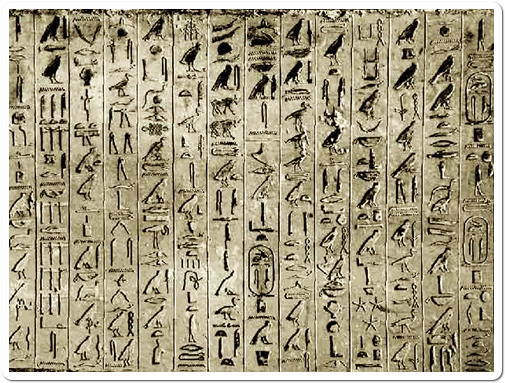The Old Kingdom is not as much a breach with the Early Dynastic Period as a continuation of it. Pyramid building came to its peak, giving this period its common nickname Age of the Pyramids.
The kings of the 4th Dynasty are believed to be descendants of Huni, the last king of the 3rd Dynasty. The Turin King-list, in fact, lists all kings from the first five dynasties without any further internal distinction. This means that the composers of the list considered these kings as belonging to a single group.
From a cultural, political and religious point of view, however, the 4th Dynasty has brought about several changes that set it apart from the first three dynasties.The most remarkable change is the transition of Step Pyramids to 'true' pyramids with smooth surfaces. This transition was not only the result of increasing technical skills, but even more of religious views that shifted from stellar to solar. The Step Pyramid symbolised a staircase to the stars. The ‘ rue’ pyramid, on the other hand was considered as a solar symbol and as a representation of the primeval mound from which all life had sprung.
The image below illustrates the evolution of the Early Dynastic Step Pyramid (to the left) to the 'real' pyramid shape of the pyramids at Giza (to the right). The pyramid of Meidum (second from left) was converted from a Step Pyramid into a 'real' pyramid by Snofru, the first king of the 4th Dynasty. The Bent Pyramid at Dashur was also built by Snofru. The angle of the pyramid may have been changed to alleviate the pressure of the weight of the pyramid.
From Netjerikhets’ Step Pyramid to the geometrical pyramids of the early 4th Dynasty..
The building of pyramids would not have been possible without a flourishing economy and a strong central government. Royal estates throughout the country centralised and provided the necessary resources that were needed in the construction of pyramid complexes. This required a powerful administration, both on a local and on a central level, to successfully manage the resources and ensure the flow of supplies, materials and riches to the central government.
Artists and craftsmen became increasingly skilled as state-sponsored ateliers produced the most exquisite objects of art for the royal family and the members of the ruling elite. The high-quality decoration of the private tombs that were grouped next to the royal pyramids, not only hint at the wealth and status of the tomb-owner, but are also a rich source of information about daily life in the age of the pyramids.

The title “Son of Re” became part of the royal titulary during the reign of Djedefre.
During the 4th Dynasty, there was also some military activity in the South, in Nubia, where a fortress was built at Buhen, near the 2nd cataract. This fortress not only confirmed the Egyptian military presence in Nubia, it was also a commercial settlement where traders from all of Nubia would come to trade with the Egyptians. Since the 4th Dynasty, Nubia, rich in many raw materials and especially in gold, has always been of interest to the Ancient Egyptians.
The addition of the title "Son of Re" to the royal titulary from the reign of Djedefre on, shows the increasing importance in the solar cult. Even more, it stresses the role of the king as the representative of the sun on earth.
During the 5th Dynasty, the solar religion was even more firmly established, when the kings built solar temples as well as pyramids. This may well explain why the 5th Dynasty Pyramids are far less dominating than their predecessors: the building effort was no longer concentrated on the building of a single pyramid and their adjoining temples.
Economic and political factors may have had some importance as well: the 5th Dynasty government seems to have been less centralised and less strong. Private tombs were no longer restricted to the vicinity of the king’s pyramid and their decoration became richer and more elaborate. Some private people had their tombs built in their own province and not in or near the necropolis of Memphis.
The last king of the 5th Dynasty, Unas, introduced yet another innovation: his pyramid was the first to have been "decorated" with texts, the so-called Pyramid Texts. These texts relate to the fate of the king in the afterlife, when he takes his place among the gods and among the stars.

Pyramid Texts make their first known appearance under the reign of 5th Dynasty king Unas.
With the 6th Dynasty, the Old Kingdom would start its slow decline. Although some military activity is reported to the East of the Delta or in Palestine and in Nubia, the central power of the king kept on decaying. This may have been caused, in part, by the long reign of Pepi II, during which more power may have been relegated to the central and local administrations.
Another key factor in the decline of the Old Kingdom was a decreasing inundation of the Nile. By the end of the Old Kingdom, the inundation apparently became less abundant. Local measures needed to be taken to ensure that the inundation would flood enough land and keep it fertile. Local administrators and governors who succeeded in controlling the flow of the floods for their region strengthened their position against the central government.
The kings of the 7th/8th Dynasty lacked the power and prestige to prevent their country from becoming divided. With them, the Old Kingdom has come to an end and the 1st Intermediate Period has started. Some history books have the 7th/8th Dynasty at the end of the Old Kingdom, but since it was during that Dynasty that the central government lost its grip on the country, it seems preferable to already place this dynasty in the 1st Intermediate Period.
Click on the thumbnails below to learn more about the dynasties of the Old Kingdom.